patrolling the great smoky mountains almost makes you wish for a nuclear winter
Don't wanna be here? Send us removal request.
Text

Baptism in Morehead, Kentucky, photographed by Marion Post Wolcott in 1940
28 notes
·
View notes
Text
An apocalypse (Ancient Greek: ἀποκάλυψις apokálypsis, from of/from: ἀπό and cover: κάλυψις, literally meaning "from cover") is a disclosure or revelation of great knowledge.
In biblical terms, a revelation is something shown to humans by God: Other words used to describe revelation include: apocalypse, prophecy, unveiling.


The Manhattan Project was a research and development undertaking during World War II that produced the first nuclear weapons.

A War Department policy held that, as a rule, munitions facilities should not be located west of the Sierra or Cascade Ranges, east of the Appalachian Mountains, or within 200 miles (320 km) of the Canadian or Mexican borders.
An OSRD team had selected the Knoxville area in April 1942,[1] and in May Arthur Compton, the director of the Metallurgical Laboratory, had met with Gordon R. Clapp, the General Manager of the Tennessee Valley Authority (TVA).


This portion of the quiet rural area was called Black Oak Ridge and was the northernmost of five principal oak- and pine-covered ridges around the meandering Clinch River. It was a verdant, beautiful countryside with rolling hills covered with dogwood and full of partridge and deer. To the east were the Great Smoky Mountains, to the west the peaks of the Cumberland Mountains.
The site was initially known as the Kingston Demolition Range; it officially became the Clinton Engineer Works (CEW) in January 1943,[15] and was given the codename Site X.[16]

From 1 April 1943, access to the Clinton Engineer Works was strictly controlled, with wire fences, guarded gates, and guards patrolling the perimeter.[101] All employees had to sign a security declaration, the purpose of which was to make them aware of possible penalties under the Espionage Act of 1917.
Mail was censored, and lie detectors were employed in security checks.[103] Everyone was issued with a color-coded badge that restricted where they could go.[104]

The third angel blew his trumpet, and a great star fell from heaven, blazing like a torch, and it fell on a third of the rivers and on the springs of water. The name of the star is Wormwood. A third of the waters became wormwood, and many died from the water, because it was made bitter. (Rev 8:10–11)
“I tell you, Bear Creek Valley someday will be filled with great buildings and factories, and they will help toward winning the greatest war that ever will be. And there will be a city on Black Oak Ridge and the center of authority will be on a spot middle-way between Sevier Tadlock’s farm and Joe Pyatt’s Place. A railroad spur will branch off the main L&N line, run down toward Robertsville and then branch off and turn toward Scarborough…Big engines will dig big ditches, and thousands of people will be running to and fro. They will be building things, and there will be great noise and confusion and the earth will shake…I’ve seen it. It’s coming.” (John Hendrix, ca. 1900)

At 05:29:21 MWT (± 15 seconds),[95] the device exploded with an energy equivalent to 24.8 ± 2 kilotons of TNT (103.8 ± 8.4 TJ).[96] The desert sand, largely made of silica, melted and became a mildly radioactive light green glass, which was named trinitite.[97] The explosion created a crater approximately 4.7 feet (1.4 m) deep and 88 yards (80 m) wide.[98] The radius of the trinitite layer was approximately 330 yards (300 m).[98]
The lighting effects beggared description. The whole country was lighted by a searing light with the intensity many times that of the midday sun. It was golden, purple, violet, gray, and blue. It lighted every peak, crevasse and ridge of the nearby mountain range with a clarity and beauty that cannot be described but must be seen to be imagined ...[102]
The wicked will then be consigned to eternal suffering in the fires of Gehinnom, or the lake of fire mentioned in the Christian Book of Revelation.[16][19][20][21][22]

1 note
·
View note
Text
Solarpunk fashion
- Visibly repaired clothes
- Adding metallic beads/badges/buttons to clothes
-turning trash into accessories
- Doodles. On clothes. Nobody says you can't.
- Brand labels crossed out
- Dramatic makeup (you can make your own)
- Piercings
-Brightly coloured clothes
- Homemade clothing
- Not forcing yourself to be 'respectable' when it comes to how much skin you are showing, as it's just skin (this goes for everyone, but only do what you are comfortable with. I personally prefer to wear multiple layers because it feels better on my skin.)
- Genderfuckery (all flavours of it)
Feel free to add (also please note that this is just for fun, don't take it as serious political commentary)
2K notes
·
View notes
Text
How to Use Dye Plants
Humans have been coloring fabric, fibers, and wool for thousands of years and we can use many of the same plants they used to dye today. Using these leaves, flowers, and roots carries on cultural traditions, deepens our connection to nature, and encourages experimentation and creativity.
Dye plants come in all types. Sometimes you'll use the entire plant, sometimes just a part of it, sometimes you'll compound dyes or overdye to create the color you're wanting. You can dye with kitchen scraps, local plants you can forage for free, or dye plants you purchase. Just be sure you don't use any toxic plants and always research before tossing plants into your dye pot!
Basic Dyeing Process:
Two main ingredients are needed to start dyeing: your fabric/fibers and the plants you're using to color them.
Your dyeing results will differ if you're working with cellulose fibers like cotton, linen, or hemp or if you're working with protein fibers like silk or wool. Your process will also differ depending on what colors you're wanting to create so research specifics for the plants you intend to use. You may also want to mordant your fibers to get deep and long-lasting color.
Mordanting: treating the fiber with a substance to make the dyes last.
Some plants are direct dyes and don't need any mordants to attach to the fiber: indigo (best on cellulose fibers) or walnut, cutch, safflower (best on protein fibers) are a few direct dye plants.
Metal mordants like aluminum, iron, copper, tin, or alum create a chemical bond between the fiber and the dye. This fixes the color so it'll stay put through washing, sun exposure, and wear. Metal mordants can also subtly or dramatically change the end result color which is great for experimenting or more precise color needs. I'm not experienced in metal mordants (yet!) but there's tons of guides online if this sounds like the right treatment for your needs!
Soy milk isn't really a mordant but a binder. It enhances color uptake and makes cellulose fibers act more like protein fibers, but doesn't form any chemical bond between the fiber and dye. If you pretreat your fibers with soy milk and wash them gently you can still have lovely colors for years. This is my favorite method because it's easy and cheap!
If you dye protein fibers you can also choose to skip pretreating. Wool and silk take up dyes pretty well without mordants, they just won't be the longest lasting colors. It works plenty well if you're dyeing for fun or don't mind to overdye your fibers if the color fades too much.
*Don't get too caught up in mordanting and finding the perfect recipe if you're new to this. Half the fun of botanical dyeing is experimentation, creativity, and not knowing exactly what colors you'll end up with!*
Preparing Dye Plants and Dyeing
The specifics on prepping and dyeing will depend on what you're using, but you can generally use fresh or dried plants as long as they're in good condition.
You'll create your dye bath by either simmering the plant material, infusing it in hot water like tea, or soaking it in water for a period of time.
The exact amounts vary but a good rule of thumb is equal weights of your dye plants and your fibers to get a good color. More dye plants = richer colors and less = lighter colors. The dye potential in a plant will also vary from year to year and even season to season. This all just means that whatever you dye will truly be one of a kind.
Once your dye bath is prepared you'll add your fibers to it. Most plants use a hot dyeing method where you simmer the fibers in the dye bath for around an hour or until you're happy with the material's color. Remove it from the dye bath, rinse it, and dry it!
Some natural dye plants to try: eucalyptus, ivy, onion, avocado, elderberries, calendula, madder, coffee grounds. I also have this post listing dye plants and the colors they create if you want to check that out!
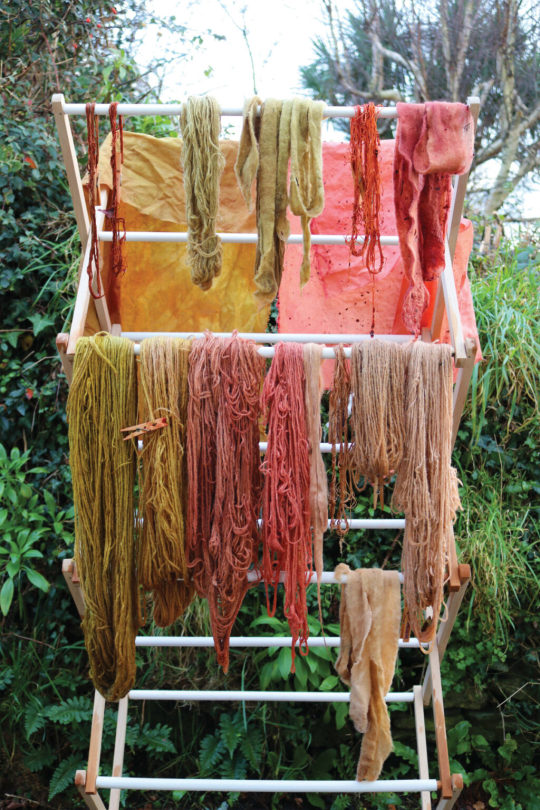
Drying wool, silk, and hemp fabrics dyed with madder root (dark pink), avocado skins (soft pink), and red onion skins (green).
Sources: 1, 2
2K notes
·
View notes
Text
Now is the easiest time of year to start a new garden bed (assuming "now" = early fall, day time temperatures around 45f). All you have to do is lay down cardboard:

Top it with still some nitrogen rich compostable matter, in this case grass clippings:

Some carbon-rich matter, in this case old wood chips:

And keep layering until it's pretty thick:

And then walk away and ignore it until spring. All winter long, it'll be decomposing, while killing the grass and weeds underneath. By spring time, the soil underneath will be nice & loose and fertile, and you'll be able to plant straight into it.
(If you want to meet organic standards, then make sure any cardboard or paper is non-glossy and black & white. This was for someone else's flower bed, so the red ink isn't going to be an issue)
4K notes
·
View notes
Text
saving what you have: visible mending
Visible mending is a way to fix clothes with holes in a decorative way. Instead of trying to make the mend invisible as possible, it can be fun and creative to hi light the tears and holes with stitching that adds to the garment. I think this method is super cool to repair clothes you may really want to keep but also make more beautiful.
There are many techniques to mending clothes and here are some popular techniques that will help you save your clothes and also reduce your consumption of fast-fashon!
darning
The embroidery technique used to repair holes in fabric by using running stitches and thread woven in-between those stitches to repair a hole. If you’re interested in employing this stitch, check out this awesome darning tutorial by Evelyn Wood!
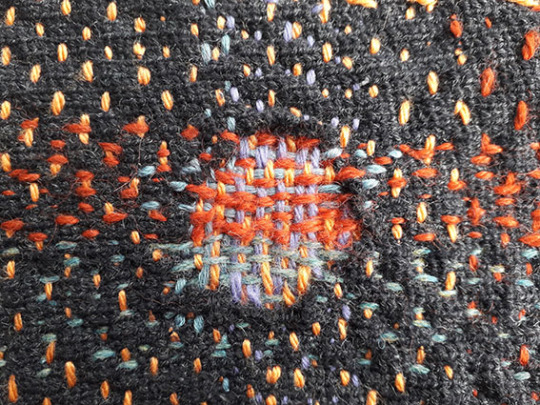
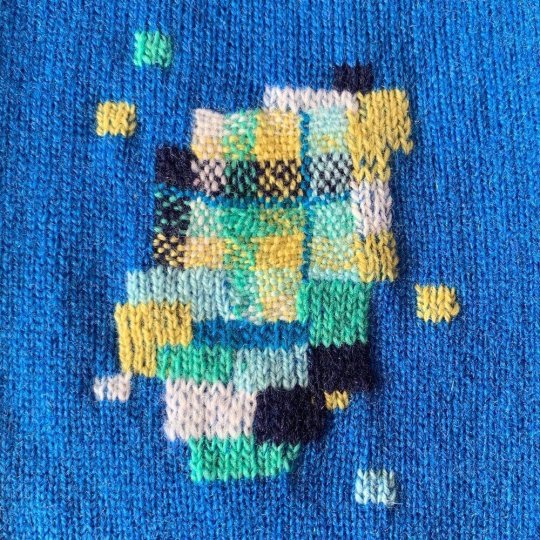
sashiko
This type of traditional Japanese mending practice is used to reinforce the strength of fabric as well as decorate. It is a great solution for mending holes with patches and well to reinforce thinning fabric! For learning the basics of Sashiko there is a wonderful beginners tutorial by Benzie Design.
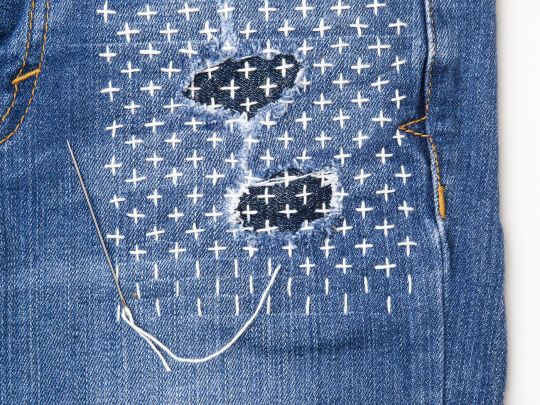
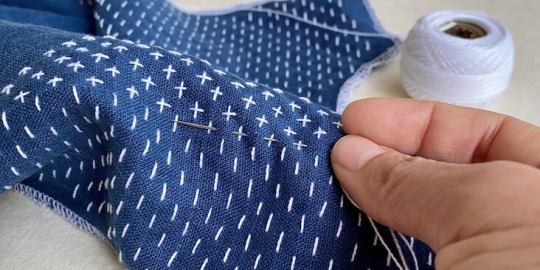
patches
Patches are very versatile when used for repairing clothes. You can sew it over a hole in your fabric or you can also so the patch in the inside to have it peek out. There is a great tutorial for custom DIY patches by wastelesscrafts and Creating with misp has a tutorial on mending with a peek-through patch.
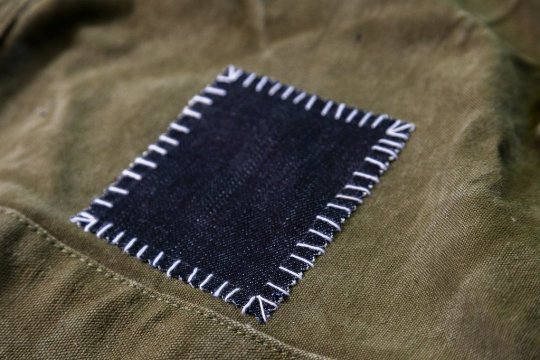
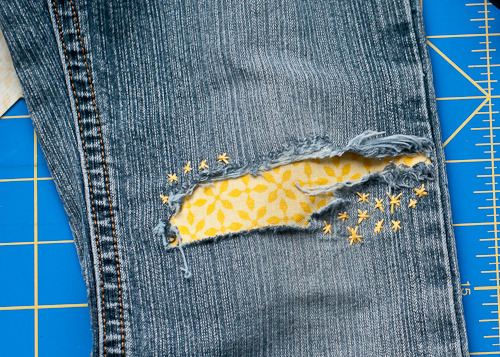
happy mending!
6K notes
·
View notes
Text
I didn’t even consider that soap could be made out of bacon grease, like when I heard “animal fat” that just never came to mind
I am once again thinking about neighborhood-scale networks of DIY and mutual aid where community wealth could be created literally for free by collecting things that people would otherwise throw away
36K notes
·
View notes
Text
textiles
earlier i posted a few sketches that i called "the virgin city scavenger / the chad community builder" or something like that and i wanted to elaborate on the choices i made re: their clothing.
the city dweller is wearing prewar clothing, but visibly patched/repaired. i envision repairs would be carried out primarily using other clothing damaged beyond repair, but as we get farther from industrial textile production, the clothing is repaired increasingly with whatever fabric is available, so there'll be some strange things walking around-- busted seams repaired with burlap thread or large tears patched with burlap sacks or dishtowels, or other rags scavenged from restaurants, factories, etc. and for obvious reasons, a ton of orange.
as we get closer to south knoxville and alcoa, there'll probably be more military clothing since the national guard bases are there. i imagine probably a lot of infantry boots, military backpacks, etc. also, the primary danger to clothing in an urban environment, particularly for scavengers, would be clothing catching on nails / rebar and tearing, rather than wearing through at the elbows/knees (as you might see on rural dwellers, more on them in a minute), so probably a lot more stitching up tears rather than large patches, although it may be more useful just for visual interest to show large patches.
as for makeup, i imagine if urban combat is something that occurs, you would probably see city dwellers with dark-painted faces (grey or dark green) to blend in better. if facial recognition is a concern, you might see unusual patterns painted on faces to confuse ai-- multiple eyes or mouths drawn on, or added lines / patterns around prominent features. city dwellers would probably also wear gloves to avoid touching potentially dangerous contaminants or to hide prominent patches of light-coloured skin. n95s or full-face respirators would probably be worn when actively scavenging, but in a city that has been continually inhabited for years, people would know where the contamination was concentrated and would avoid those places unless it was necessary to visit them for a specific purpose, so you wouldn't see those things in general use. note also that my guy has a dosimeter. i'm not sure if a dosimeter or geiger counter would be better. i just stuck a dosimeter on because of my experiences working in contaminated sites.
the rural builder is not wearing anything that was scavenged from a store, or if she is, it's not much (i imagine people with breasts might save underwire and clasps from manufactured bras and repair them or refit them with knitted fabrics). i actually don't know if it's possible to graze sheep in the old-growth forest that is appalachia, but i do know that mt leconte is resupplied by a llama train, so i have to imagine that llamas can live in appalachia. for this reason, i drew her wearing a knitted llama wool tunic. since it's still tennessee and still ass-hot, i gave the tunic a very open knit for breathability. she is going blackberry picking and so carrying a kroger basket-- no need to make baskets if those are still around, after all, but i suspect it would be possible to weave baskets from dried kudzu vine. a plastic basket also makes washing the fruit easier, since you can dunk it entirely in water.
since blackberry bushes are thorny, she is wearing thick deerskin gloves and thigh-high moccasins (also deerskin). she is wearing either a dosimeter or a geiger counter strapped to her thigh so she doesn't have to worry about dropping it or losing it. it's best to wear a dosimeter or geiger counter as close as possible to your body's centre mass since that gives the best approximation of whole-body dose, but the weight of the dosimeter would pull on the knit and possibly catch on bushes as she walks (plus, sticking it there adds visual interest to an area that otherwise doesn't have anything to break it up. also it looks cool). the prewar government probably didn't keep the best records of where they were dumping toxins, so the thick gloves and boots and dosimeter/geiger counter are all necessary for tromping around in the woods. you never know when you're going to stumble upon an old, filled-in cooling pond, after all. since she's going to be outside and moving around, i didn't bother with a respirator as i would have with the scavenger.
the primary danger to clothing would be wearing rather than tearing. since rural dwellers would spend a lot of time kneeling in the dirt, their pants would probably have reinforcements or patches in the knees, or if it was hot enough, they wouldn't bother with pants, as i have depicted here. overall i envision a lot of knitwear and deerskin clothing. hemp also grows well in appalachia, so probably there would be hemp fabrics available in more developed communities, probably sewn into simple tunics. people would probably decorate their clothing with embroidery; there would potentially be simple buttons made out of deer antler. absolutely no zippers, though
1 note
·
View note
Text
on urban gardening
previously i assumed that growing anything to eat in urban soil (i.e. urban gardening) was a terrible idea because as we know, soil is contaminated with lead from leaded gasoline, so plants grown in the soil would also be toxic. but that turned out not to be true: plants typically don't take up the lead in soil, and the danger is from eating plants that have contaminated dirt on them, as long as you wash the plants before you eat them should be fine. the exception to this is root vegetables (carrots, turnips, beets, etc.) and leafy greens, which do tend to take up lead... however, the amount of lead is not shown to be proportional to the amount of lead present in the dirt. additionally, the risk is highest when the food is eaten on an empty stomach, so you can avoid some of the risk by eating these vegetables as part of a dish. also, it is not shown that the lead is accumulated significantly in the body after eating.
although the risk of lead exposure from urban gardening is low, there are a few things you can do to further reduce lead exposure: adding compost to the soil and using raised beds will both lower potential exposure. adding soil amendments like compost will dilute the lead concentration of soil, and in some cases, compost can render lead insoluble. the most danger from lead exposure is near older homes and areas where water drips from roofs, so avoid gardening in these areas, or use raised beds and soil amendments.
source: Brown, S.L., Chaney, R.L. and Hettiarachchi, G.M. (2016), Lead in Urban Soils: A Real or Perceived Concern for Urban Agriculture?. J. Environ. Qual., 45: 26-36.
1 note
·
View note
Text


1 note
·
View note
























